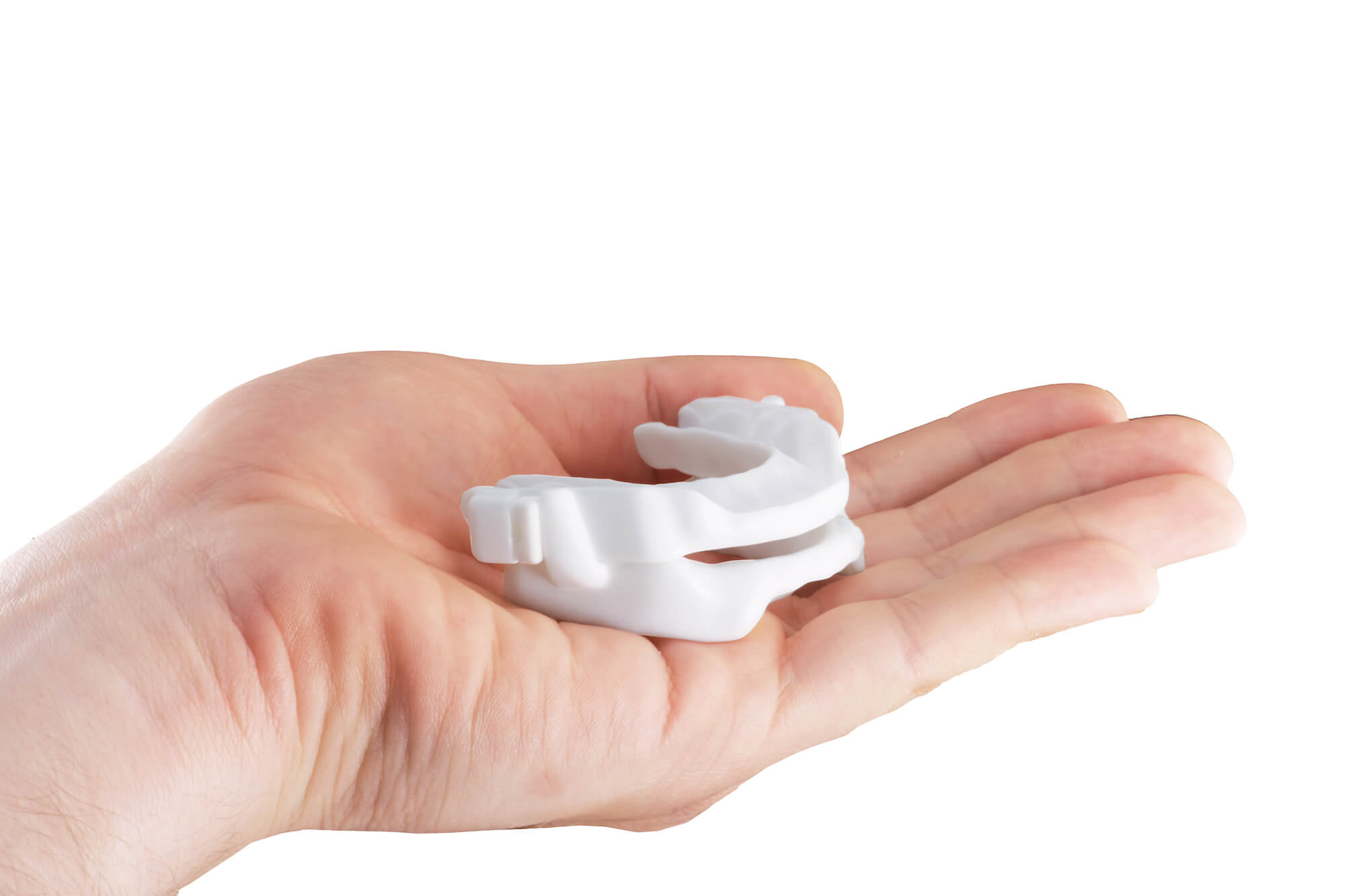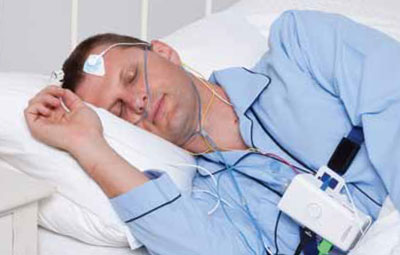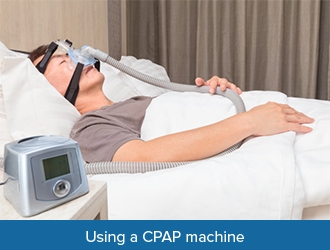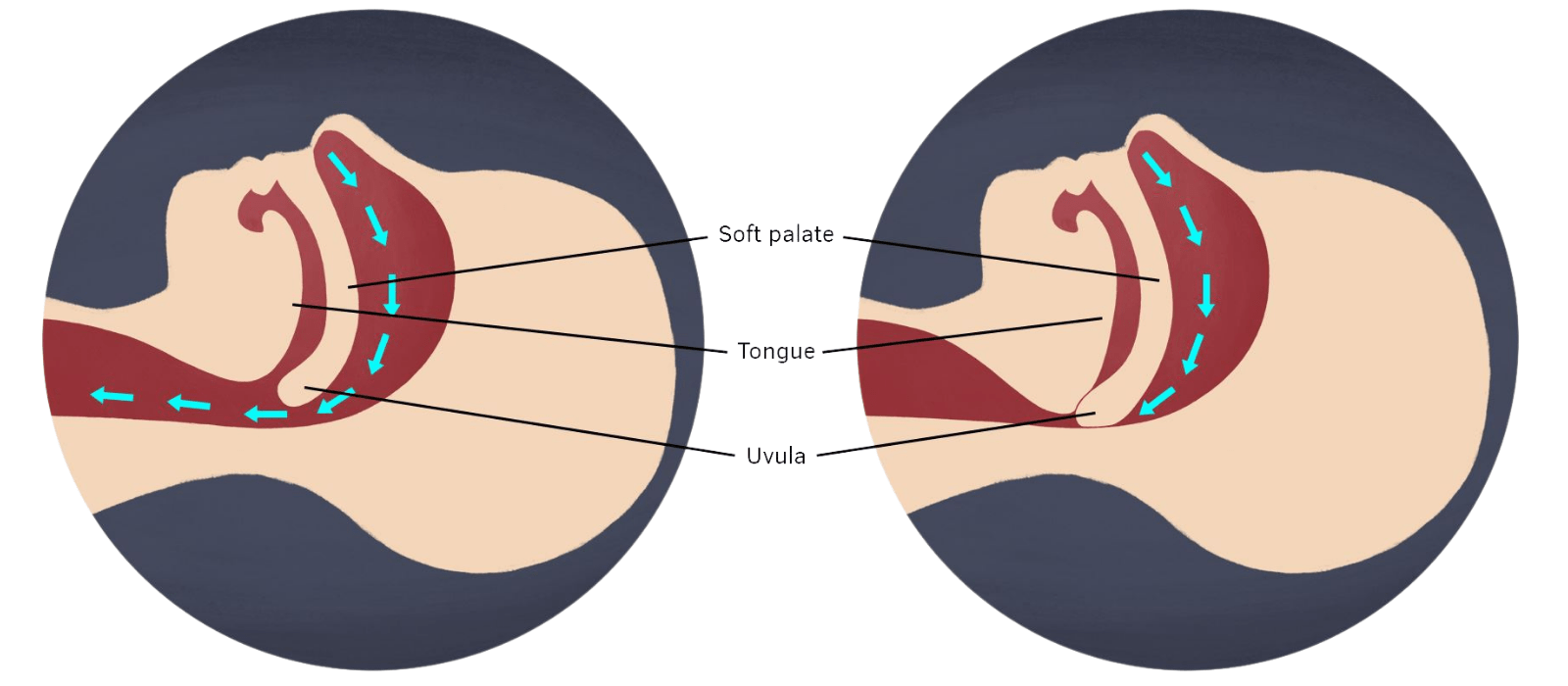Treating Sleep Apnoea
1300 101 505Treating Sleep Apnoea
1300 101 505What is obstructive sleep apnoea (OSA)
Around 70% of people who regularly snore also have obstructive sleep apnoea (OSA), in which the soft tissues in the throat, including the tongue, collapse against the back of the throat. This blocks the upper airway, and airflow stops or is reduced.
When the blood oxygen level becomes low enough, the brain sends a signal known as an arousal, and the sleeper partially awakens, the obstruction in the throat clears, and the flow of air starts again, usually with a gasp. This sequence of events can occur throughout the night, totally disrupting sleep quality, with most people unaware this is occurring.
This serious medical condition is associated with long-term health problems, including hypertension, heart disease, stroke, and diabetes. When successfully treated, patients commonly report significant improvements in sleep, energy, quality of life, and close relationships.
Oral Appliance Treatment For Sleep Apnoea
Custom-fitted oral appliances are now generally regarded by experts in the field as the most comfortable option for treating sleep apnoea. The American Academy of Sleep Medicine (AASM), the world peak body, has recently designated only two frontline treatments for OSA- the CPAP machine and Oral Appliances. Based on a large body of research, the AASM recommend that all sleep physicians offer patients the choice of Oral Appliances or the CPAP machine.
New generation 3D printed Nylon appliances are extremely thin and comfortable with various unique designs offering features such as being able to speak, sip water and freely move the jaw during use.
Oral appliances work by comfortably holding the jaw slightly forward, preventing the tongue and tissues at the back of the throat from collapsing into the airways. Learn more about the different types of oral appliances. CPAP has a different mode of action and works by delivering pressurised air to keep the airways open.

The Importance Of A Sleep Study
The only way to be certain you have sleep apnoea is to do a diagnostic sleep study. One of the main purposes of the sleep study is not just to detect the presence of sleep apnoea but to determine the severity. The degree of severity of the sleep apnoea will help determine which is the best available treatment. Sleep apnoea is classified as mild, moderate or severe, depending on the number of disturbances to breathing per hour of sleep.
Traditionally sleep studies were done during an overnight stay in a hospital. With the advances in technology, a sleep study can now be done in the comfort of your own home. When done at home in your familiar environment, a sleep study can be more representative of your usual sleep.
We encourage you to take our Online Self-Assessment as the first step in determining the chance of you having sleep apnoea. Please call SleepWise Clinic on 1300 101 505, or submit a contact form here to find more about our proven snoring and sleep apnoea solutions.

Other Sleep Apnoea Treatment Options
Surgery
Surgery is not usually a first-line treatment for sleep apnoea. It may involve significant jaw surgery, as well as cutting and tightening the soft tissues in the throat.
Surgery is regarded as a last resort treatment; however, it can be very effective in a select group of patients.
CPAP machine
The CPAP machine works by delivering pressurised air to keep the airway open during sleep. The mask is attached to a machine by a hose that the patient wears during sleep.
People using the machine are required to wear the attached mask throughout the night.

What Else Might Be Helpful?
Weight Loss
If you are carrying extra kilos, weight reduction can improve your sleep apnoea. Excess weight deposits fat in and around the soft palate, tongue and neck structures, consequently reducing the size of the airway. Weight loss can reduce these fat deposits, which enlarges the airway size, thereby reducing snoring and sleep apnoea.
Although weight loss is recommended and beneficial, it is usually insufficient as a treatment option to overcome all problematic sleep apnoea and snoring.
Sleep Position
Many people have what’s known as positional sleep apnoea, whereby sleeping on the back is a key contributing factor. Elevating the head of your bed and avoiding sleeping on your back can be very helpful. We can help you with strategies to help you sleep on your side.
Substances to avoid
Alcohol and most sleeping pills relax the muscles of the throat and can worsen snoring and sleep apnoea. You should avoid alcohol for at least three hours prior to bedtime. Smoking and caffeine can also worsen snoring and sleep apnoea, due to swelling of the nasal and throat tissues.
Clear nasal airway
Any form of nasal obstruction can worsen sleep apnoea and snoring. There are simple strategies for improving the nasal airway which can include the use of sprays, nasal cones or strips. While perhaps not offering a cure, these methods have the potential to enhance the effectiveness of the established treatments.

